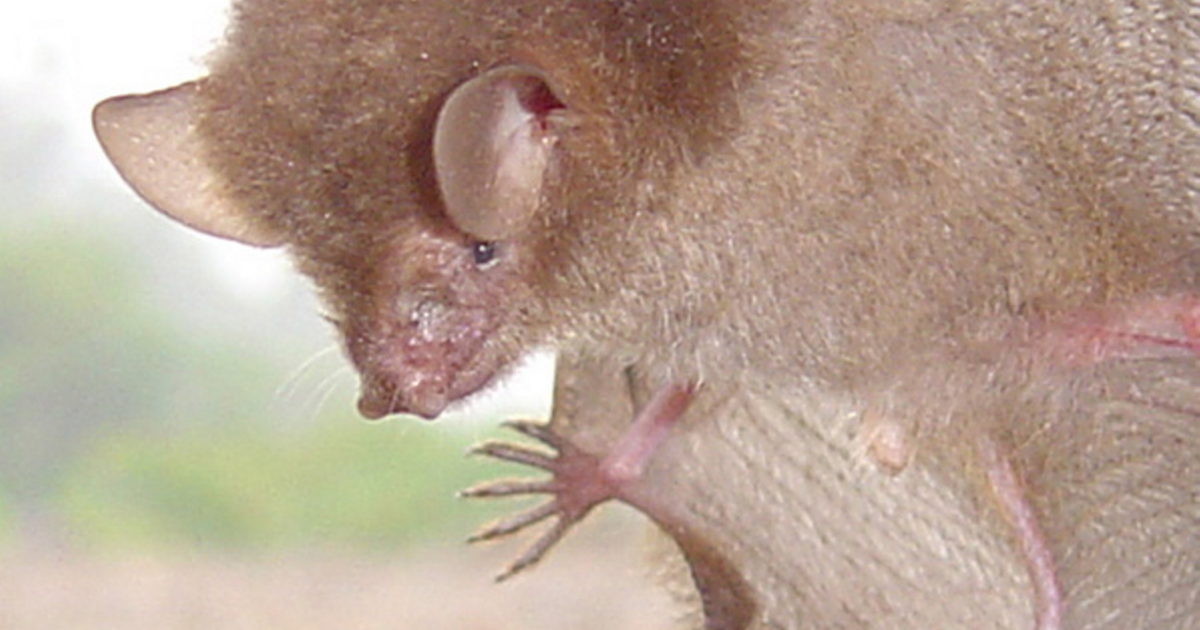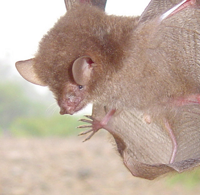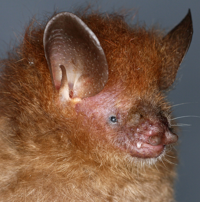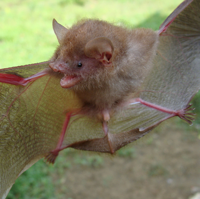(D. Balete via SWNS)
By Stephen Beech
Six new species of bat have been discovered in time for Halloween.
The tube-nosed bats were identified in the protected forests of the Philippines by an international research team.
They say the nocturnal – and “slightly spooky” – group of mammals is “incredibly diverse.”
Formally described as new species through the examination of physical and genetic characteristics, the six are commonly known as tube-nosed bats.
The study, published in the journal Zootaxa, was conducted by American and Canadian scientists from the Field Museum in Chicago, Lawrence University in Wisconsin, and the Royal Ontario Museum (ROM).
Dr. Judith Eger, ROM’s curator emeritus of mammals, said: “This latest research serves to illustrate how much remains unknown about the countless species with which we coexist.
(J. Sedlock via SWNS)
“Expanding our knowledge of biodiversity is essential to understanding and managing our environment on behalf of humanity and the other species on which the vitality of our planet depends.”
Dr. Burton Lim, assistant curator of mammals at ROM, said: “I’m astonished at how much we still don’t know about the natural world, such as how many bat species there are.
“Before we started our research, there were only two species of tube-nosed bats reported from the Philippines.
“We confirmed the presence of one of those species, plus another closely related species previously unknown to science.
“The other previously reported species was actually not present in the Philippines, but we did find five new species that were masquerading as it.”
The six new bat species – Murina alvarezi, Murina baletei, Murina hilonghilong, Murina luzonensis, Murina mindorensis, and Murina philippinensis – were identified as separate species through a combination of morphological examination and genetic testing.
(D. Balete via SWNS)
One of the new species is named in honor of James Alvarez, a young bat biologist and student with the University of the Philippines – Los Banos, who tragically died during fieldwork in 2018.
Another is named after prominent Filipino biodiversity scientist Danilo “Danny” Balete, who had been involved since 1989 with the Field Museum’s Philippine Mammal Project.
Researchers examined tooth pattern, skull shape, fur banding and other visible characteristics, and conducted genetic analyses in the ROM Laboratory of Molecular Systematics.
Tube-nosed bats (genus Murina) are insect-eating bats found throughout Asia that depend on forested areas for roosting and are therefore at risk from deforestation.
The Philippines was known to have 79 species of bats – even before the latest discovery.
With many diverse forest environments in the Philippines, researchers say more new bat species are likely to be discovered in the future.
Dr. Lawrence Heaney, curator emeritus of mammals at the Field Museum, said: “It has been a long and slow process of discovery, but these six previously unknown species show clearly just how wonderfully extensive Philippine biodiversity is.
(Field Museum via SWNS)
“On a per-unit-area basis, the Philippines has the most distinctive mammal fauna of any country worldwide.”
Study co-author Dr. Jodi Sedlock, of Lawrence University, said: “These bats are notoriously elusive, so the tube-nosed bat collection this study examined was cobbled together over many years, expeditions, and memorable experiences – one bat at a time.
“As a result, it’s deeply satisfying to see our collection make such an important contribution to Philippine biodiversity studies.”
She added: “I’m eager to learn what these newly described tube-nosed bats each do with their tube-like nostrils that, presumably, offer them directional smell detection.
“Describing them is an essential beginning, but there’s still so much to learn.”
In the Philippines, Dr. Eger says Halloween is celebrated less than in the UK and US, but Filipinos have their own bat-related folklore of “aswang” – frightening and shape-shifting monsters, some inspired by flying fox bats.
Bats are thought to bring good luck in China; fortune and wealth in India; and are worshipped as deities in Guatemala and Mexico.






